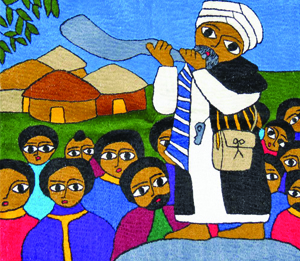The Falashas, Beta Israel, the Jews of Ethiopia
Genocide is a motif in The Speed of Life
In one of its 1948 charters, the United Nations defined genocide to include (in addition to mass murder, obviously) the forced relocation of an ethnic or religious group in order to, among other things, obliterate their culture.
The prevalence of genocide continues to this day. There was the famous forced relocation of a million Armenians from Turkey at the turn of the last century. The mass murder of Jews, gypsies, gay people by the Nazis in the WW II era. The Hutu slaughter of 800,000 Tutsi people in Rwanda in the 1990s. The forced relocation of 100,000 Hindus from Bhutan also in the 1990s. Perhaps like war, genocide will always be with us. I’d like to think not.
The genocide of the Ethiopian Jews in the 1980s and ’90s is exemplary.
Scholars will say that the origin of the Jews of Ethiopia and other parts of Africa are unknown. That does not mean that those origins are unknowable, which I say they are with a bit of detective work, we will prove within the possibility of some reasonable doubt in these illustrated multi-part blog entries—this one and those to follow—that the Ethiopian Jews were descendants of King Solomon and the Ethiopian Queen of Sheba, members of the lost Tribe of Dan (meaning judges), referred to as the Falasha or Beta Israel.
Before the mid-19th century, Western Jews were surprised to discover tribes of black Jews living in Africa, mainly in Ethiopia. And still their existence was not widely known in the West or by the other Jewish people generally until after WWII. These people, the Jews of Ethiopia had been separated from the rest of Jewry for millennia. They spoke Amharic, an ancient tongue of the Jewish people spoken by them around the time of the birth and death of Jesus.
The gallery above, Exhibit 1, so to speak, for educational purposes I present examples of Ethiopian Jewish art found in the mid-19th Century and discovered by me about ten years ago in Wikipedia.
Obvious depictions of Old Testament stories; Moses parting the Red Sea, baby Moses discovered by Bithia, the Pharoah’s daughter, Noah and his wife in the Ark, then Menorahs, the blowing of the Shofar and an Ethiopian Haggada.
In a subsequent post, I’ll dwell on the fact that in their art, Bible stories are depicted with African (black) characters.
Before their late twentieth-century exile from Ethiopia, the Falasha lived in Christian or Muslim towns in the north region of Lake Tana of Ethiopia. Lake Tana is the largest lake in Ethiopia and is the source of the Blue Nile.

Blue Nile Falls
Under Emperor Haile Selassie I, who ruled Ethiopia from 1911 until 1974, Falashas held elevated positions in education and government. But after Selassie was ousted in 1974, persecution and an eventual genocide of the Falashas began.
Based on the sixteenth-century writings of Rabbi David ben Solomon ibn Zimra, in 1973, Israel’s Chief Sephardic Rabbi, Ovadia Yosef, ruled that the Falasha were Jews and should be brought to Israel. In 1975 this was confirmed by Israel’s Chief Ashkenazi Rabbi Shlomo Goren. Thus, in 1984 and 1985, Israel airlifted more than 12,000 Falashas to Jerusalem. These rescue operations ceased in 1985 when the Ethiopian government stopped them. In the late 1980s, the Falasha were exiled to The Sudan, where they died of malnutrition and disease by the thousands in refugee camps. In 1991, a covert Israeli Air Force mission, code named Operation Solomon, rescued more than 14,000 Falashas, airlifting them in to Jerusalem.
So we have the art, and we have Jewish traditions practiced by the Falashas. How did their Jewish origins come about? I see three possibilities. The Jewish religion and religious practices, bible stories, and culture developed independently from the development of Judaism elsewhere. This is so unlikely that I’ve not found a single scholarly paper that proposes it. The Jews of Egypt migrated south, escaping slavery under the Pharos while the remaining Jews were led out of Egypt by Moses to the promised land. Or the Jews of the Tribe of Dan migrated to Africa—to Egypt and then Ethiopia—from the land of Canaan and then for centuries were separated from the rest of Jewry.
We’ll explore this and more in forthcoming posts.














